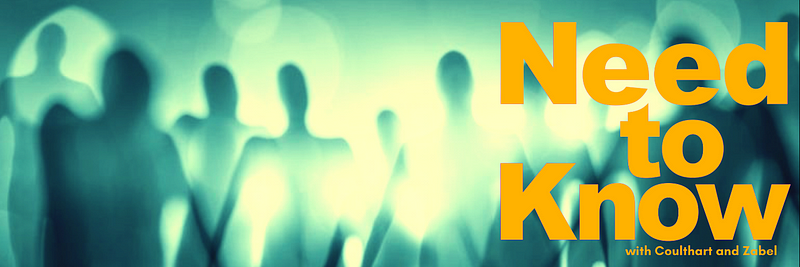Exploring Time Travel: Could UFOs Be Us from the Future?
Written on
Time travel and unidentified aerial phenomena (UAP) have sparked intriguing discussions. Some theorists suggest that these mysterious entities may actually be humans from the future, returning to assist us in avoiding impending disasters. However, why is this process taking so long?
Human imagination has an extraordinary tendency to accept what it can envision. Recently, prominent figures like Ross Coulthart and Richard Dolan have shared insights from their “insider” sources, hinting that UAP might be time-traveling humans. These beings are purportedly coming back to avert a looming global crisis.
Given the current geopolitical tensions hinting at a third world war, such a notion is somewhat reassuring.
However, this narrative surrounding time travel may also serve as a distraction from more pressing issues. Yet, I believe the uptick in time travel discussions indicates that some individuals with privileged information are beginning to recognize the limitations of the Extraterrestrial Hypothesis that has dominated UAP discourse for generations.
The reality may be that those with access to classified UAP data are forming a preliminary alternative theory about the origins of these phenomena—though their conclusions may be skewed by flawed assumptions.
Reports of UFO encounters often suggest that they defy our understanding of the laws of physics. Our comprehension relies on assumptions about the fundamental aspects of reality. Clearly, the existing scientific framework has overlooked something profoundly significant regarding the nature of space.
If space is not as scientists believe, then time is likely not either.
A Narrative with No Substance
Time travel, as we understand it today, originated as a narrative device. The British author H.G. Wells popularized the concept in his 1895 work, The Time Machine: An Invention, where he introduced a mechanism that could navigate through time while remaining stationary.
In film adaptations of The Time Machine, the main character seeks to reverse the death of his fiancée, only to discover that his attempts merely alter the circumstances without changing the outcome. Such is the extent of love's influence.
Wells' The Time Machine was actually his second foray into time travel; his first was the 1888 short story The Chronic Argonauts, which also featured a time machine. However, the original concept can be traced back further to Enrique Gaspar's El Anacronópete in 1887.
Time travel, as we conceive it, is a relatively modern idea.
Bryce Zabel, a notable figure in UFO narratives, was the first contemporary screenwriter to propose that UFOs might originate from the future in Official Denial, SyFy’s inaugural original film in 1993.
The notion of mechanical time travel emerged during the Industrial Revolution, contrasting with earlier supernatural interpretations. For instance, Samuel Madden's Memoirs of the Twentieth Century (1733) utilized an angel for time travel, while Chinese author Dong Ye employed magical mirrors and jade portals in his 1640 work Supplement to the Journey to the West.
These narratives convey a deterministic view of time, where the past and future are fixed. Although specifics may change, the overall trajectory remains constant.
Thus far, these ideas remain purely fictional.
The Intersection of Time and Space
The challenge with time travel lies in its inseparable connection to space travel.
Consider the conventional model: our Sun, along with its planets, moves through the Milky Way galaxy at approximately 70 miles per second. Consequently, the Earth occupies a different position in space with each passing moment, resulting in significant spatial shifts over time.
In a single day, the solar system travels about 32 million miles. If one were to attempt a journey 100 years back to witness a historical event, they would need to traverse an astonishing distance of over a trillion miles (365 days x 100 years x 32 million miles per day).
This means that to reach a point in the past, you must also account for the Earth's displacement in space.
However, one might recall the fictional exploits of Superman, who defied physics to reverse time. While this makes for captivating cinema, it doesn't hold up in reality. To genuinely occupy a past moment, one must be at the corresponding location in space, with celestial bodies in their original positions.
In essence, to travel back in time necessitates simultaneous movement across vast distances. If one were to succeed, their mere presence would disrupt the past, initiating a chain reaction of changes.
This presents a paradox rooted in linear thinking prevalent in the scientific community.

Understanding the Nature of Space
Light plays a crucial role in our comprehension of space.
Sometimes, the essence of an argument hinges on a minor detail. My understanding of this topic has been greatly influenced by the insightful content of the Veritasium YouTube channel, particularly the video titled "Why No One Has Measured The Speed of Light."
You might instinctively recall the speed of light as 299,792,458 meters per second. However, the underlying question is How do we know this?
Surprisingly, our understanding relies on a convention established by Albert Einstein. A convention is a rule formed through usage, often based on assumptions without concrete evidence.
Einstein's approach was to accept the speed of light as isotropic, meaning it travels at the same speed in both directions. Yet, this remains unproven.
The speed of light has been measured through reflection, and its one-way speed is derived from this measurement. The relativistic nature of the universe complicates direct measurement of light traveling in one direction.
Thus, we assume the speed of light heading toward a target is identical to that of the returning reflection, a convenient assumption for Einstein’s purposes.
The crucial realization is that two points in space can experience different time rates due to gravitational effects. Time is not a constant; rather, it is a relative condition tied to space, which has profound implications for time travel.
There is no absolute linear timeline.
Only relational connections exist between varying points in time. Relativity is a foundational aspect of our universe. If UAP are potentially from a future that relates to our present, then they might be perceived as a relative past from their perspective.
Which past are these hypothetical time travelers aiming to alter? What criteria determine their temporal destination? How can they expect to influence a future that has not yet materialized during their time travel?
Abandon all linear time travel, ye who enter here.
Cycles of Time
History is not a linear progression but a cyclical phenomenon.
Have you observed that everything in the universe is in motion?
At every level of reality, change is perpetual. Whether a rock or water, all entities partake in the Earth's rotation, continuously moving through space.
In such a universe, it is reasonable to consider that time might also be cyclical. If time spins, it runs in cycles, suggesting repetition—whether viewed as loops or spirals.
The inquiry then becomes: what does time cycle around? The answer may not be satisfying, as we must venture beyond conventional scientific paradigms into the realm of mystery.
Time can be perceived as the spin of consciousness.
What does consciousness dwell within? Space, of course. This leads us to the fundamental issue:
Space embodies the essence of the mind.
This notion is yet to be fully embraced by science. The challenge of consciousness is not insurmountable unless one clings to a paradigm that offers no explanation for it.
Previously, I offered insights into understanding the nature of the mind in The Key To All Existence. While not universally accepted, it attempts to point toward an experience that transcends mere discussion.
The mind's nature is the only aspect that remains entirely still within the physical universe. In a state of complete stillness, only simultaneity exists—no duration, no spin. This is the realm one returns to upon death, a brief moment before re-engaging with the cycle of consciousness.
Stop, Dave. My mind is going. I can feel it.
Rethinking UFOs
UAP may represent advanced technology related to consciousness.
This realization prompts curiosity about Lue Elizondo's perspective. When the pieces align, the conclusion becomes evident.
Historically, concepts like "planes of existence" and "realms of being" were more widely accepted, but over the past two centuries, such beliefs have been derided. This dismissal is inconvenient for a materialist paradigm focused solely on the tangible world.
Yet, if the physical realm is not the entirety of existence—and consciousness is undeniably real—other dimensions of consciousness could coexist with our own. These dimensions would possess their own physics, which remains unaccounted for in contemporary scientific models.
Instances of travel between these realms likely incur temporal costs. A compelling example from the Mahabharata tells of King Kakudmi, who journeyed to a celestial realm with his daughter to seek marriage advice. Upon returning to Earth, they discovered that countless years had passed while only hours elapsed for them.
This illustrates that consciousness is inherently tied to location. Time dilation, a phenomenon reported in UAP encounters, may relate to the technology utilized by these entities, originating from different states of consciousness with their unique temporal characteristics.
Today, a prevailing belief suggests UFOs emanate from interstellar space, a notion lacking substantial evidence and often accepted based on collective assumption rather than inquiry.
Consequently, the nature of space, which parallels the nature of the mind, remains largely unexplored.
Trail of the Saucers is edited by writer/producer Bryce Zabel and published by Stellar Productions. Zabel co-hosts the podcast Need to Know with Coulthart and Zabel, available on all major platforms.
